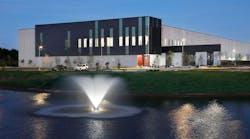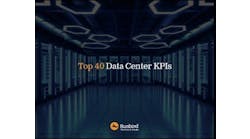Edge computing is just getting started. But it will be a key component of the Internet infrastructure of the future, providing connectivity and data storage for transformative new technologies like virtual reality, the Internet of Things and autonomous vehicles.
America’s edge infrastructure will develop over time, with investment tracking the business opportunity. A key first step is to add more data center infrastructure in cities beyond the Big Five markets that house the majority of data center space. This process has begun in earnest in early 2017, as investors and service providers are buying up facilities in these regional “second-tier” cities.
The latest evidence is today’s announcements that 365 Data Centers has been acquired by a group of investors including Chirisa Investments, Lumerity Capital and Longboat Advisors. The deal includes eight data centers with a strong base of carrier and content customers, including facilities in Buffalo, Chicago, Detroit, Indianapolis, Nashville, Philadelphia, New York and Tampa.
The company will get a new CEO in Bob DeSantis, who has experience in regional data centers from his tenure as co-founder and Managing Partner of Xand.
“This initial acquisition provides us with a proven carrier neutral platform in predominantly edge markets that can realize internal growth from added content provider and enterprise market share and be enhanced by additional data center and managed services investments,” said DeSantis. “We intend to grow the company for our customers, employees and investors by significantly increasing our sales team, investing in new product offerings, and broadening our target market to leverage our exceptional carrier, content, and cloud centric ecosystem and the available space and power at each of the facilities.”
Building Platforms for Future Growth
The reference to the “initial” acquisition makes clear that 365 Data Centers will become a vehicle for additional acquisitions, as confirmed by new Chairman Colm Piercy of Dublin-based Chirisa, who is also the chairman of Irish wholesale data center specialist Dataplex.
“This investment provides Chirisa with a solid foundation to execute on its strategy to broaden its data center, managed services, and real estate reach into the US market,” said Piercy.
This is becoming a popular strategy in the second-tier markets, as investors buy up smaller companies to create a national network of data centers. Some examples:
- Tierpoint has been the leading proponent of this regional roll-up strategy, making a series of 11 acquisitions in just six years to create a national network of 38 data centers in 24 markets, with more than 6,000 customers.
- Digital Bridge is building a retail colocation network through its Databank brand, which it acquired last year. It has subsequently acquired C7 Data Centers of Salt Lake City and facilities from 365 Data Centers in Cleveland and Pittsburgh. Digital Bridge also owns significant telecom tower assets, as well as distributed antenna systems (DAS), small cells and other wireless connectivity solutions, creating intriguing possibilities for building edge networks.
- EdgeConneX has also pursued growth in edge markets, but instead of buying existing providers, it has been building new data center capacity. EdgeConneX, which specializes in content distribution, has built out a network of 24 data centers across the U.S. and Europe. The company designs its facilities to operate without full-time staff on site, using sophisticated monitoring and remote hands when on-site service is needed.
Others pursuing growth strategies in second-tier markets include Compass Datacenters, ByteGrid and H5 Data Centers.
These regional operations are different animals than the data center presence seen Big Five hot spots, which include like Northern Virginia, Dallas, Silicon Valley, Chicago and New York/New Jersey. For one thing, the facilities in second-tier cities are smaller. In its eight markets, 365 Data Centers has a total footprint of 126,000 square feet of space and 9 megawatts of power, which is the equivalent of one medium-sized data center in Ashburn, where requirements range north of 20 megawatts per building.
Investors See Opportunity at the Edge
The opportunity in regional markets was a popular topic at last week’s Greater New York Data Center Summit. The conference, hosted by CapRate events, featured investors and data center executives, who said the investor appetite for Internet infrastructure is strong.
“It’s quite healthy out there,” said Tony Lin, a director at private equity firm GI Partners, a long-time player in the data center sector. “The hunt for yield in real estate is coming out of the core food groups and into the data center market. You’re seeing different kinds of institutional money we haven’t seen before, including infrastructure funds.”
An example is Stonepeak Infrastructure Partners, which recently acquired Cologix. The private equity firm has built a portfolio of companies in natural gas, solar energy, microgrids and wireless antennas. Stonepeak says it will invest $500 million to accelerate the growth of the Cologix platform, which is focused on second-tier cities and includes a presence in leading markets in Canada.
More Capital Enables Scale, Reach
That’s a familiar pattern. When investors buy established operators, the upside is found by leveraging a successful operating template and investing the capital necessary to add scale.
“It’s to be expected that we’ll see more consolidation,” said Jonathan Atkin, a Managing Director of RBC Capital Markets who specializes in data centers and telecom, who said many deals will involve companies involving local markets selling to larger operators, including the public data center REITs. “I definitely see an increasing amount of interest in Tier 2 markets.”
As background, we’ve previously discussed the broad outlines of edge computing and how it will impact data center geography and network infrastructure, as well as in our executive roundtable. In January we predicted that edge computing would create meaningful opportunities for data center expansion in 2017, and the recent M&A action reinforces this thesis.






